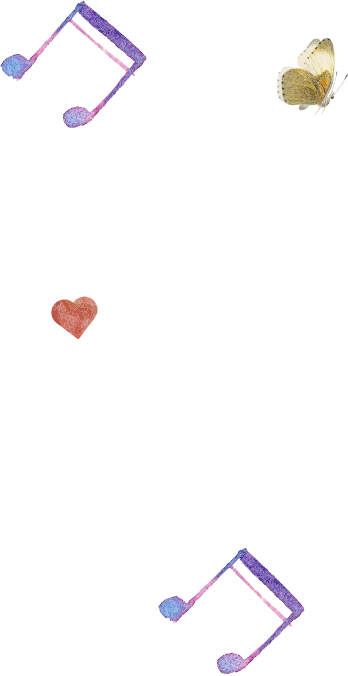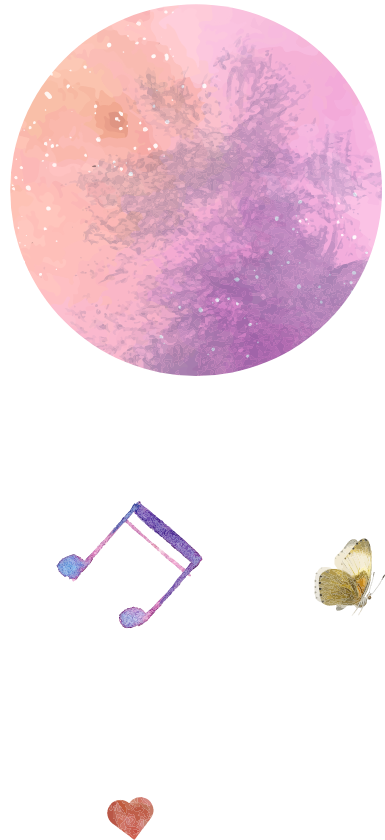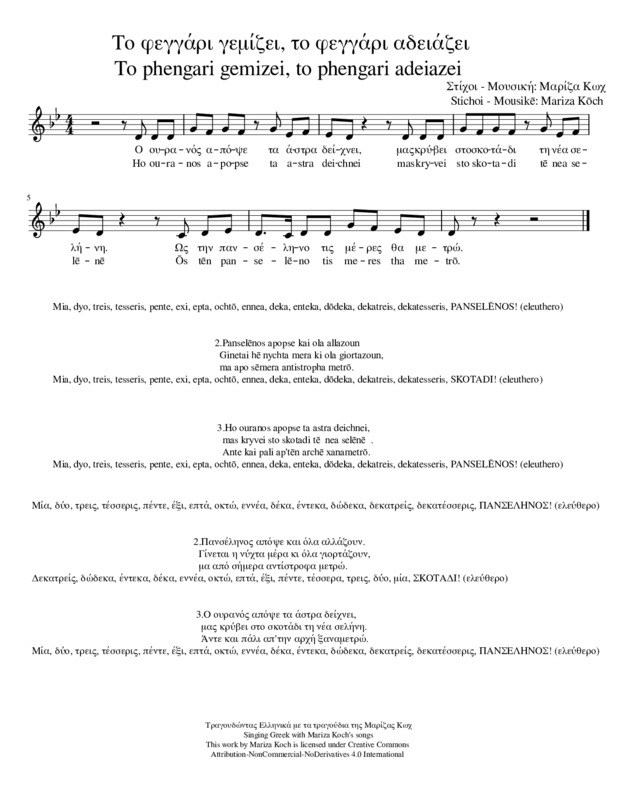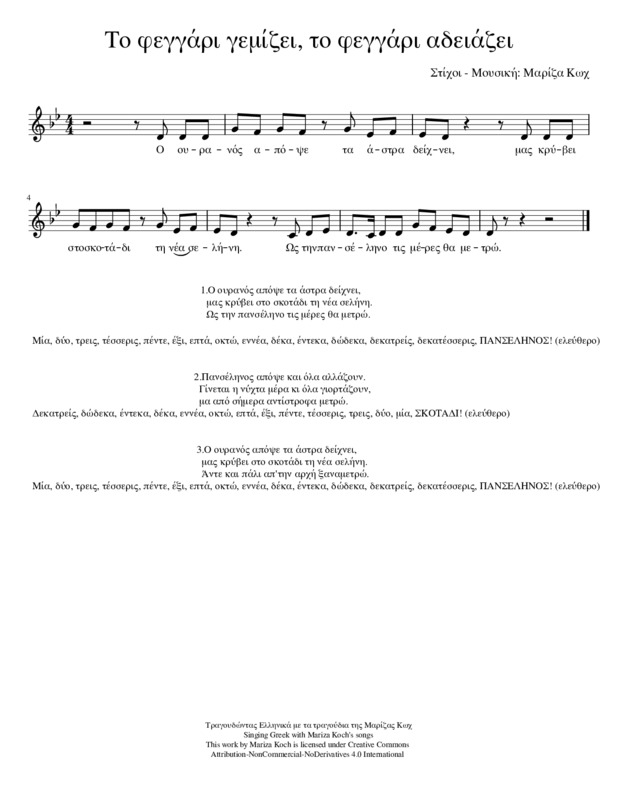
To phengari gemizei, to phengari adeiazei

To phengari gemizei, to phengari adeiazei
Pronunciation
Το φεγγάρι γεμίζει, το φεγγάρι αδειάζει
Speech Comprehension and Production
Articulation of the double consonant /γγ/ (/ng/) and practice using words found in the song as well as other words [φεγγάρι (fengari, moon) σφουγγάρι (sphoungari, sponge), αγγούρι (angouri, cucumber), λογγάδι (longadi, little forest, the woods), etc.] and its difference with /γκ/ (/gk/ or /nk/, /gk/ when the consonants are found at the beginning or at the end of the word, and /nk/ when in the middle) [γκαρίζω (gkarizō, to bray) γκρεμίζω (gkremizō, to tear down), αγκαλιάζω (ankaliazō, to hug)].
Climax and anticlimax in the song [το φεγγάρι γεμίζει, το φεγγάρι αδειάζει] (to phengari gemizei, to phengari adeiazei = the moon fills up (waxing phase), the moon is waning). Discuss the reverse numbering in the refrain.
Produce couplets using the antithesis technique [such as σκοτάδι-φως (skotadi-phōs, dark-light)] in other physical environments in relation to time i.e. tide-low tide.
Climax and anticlimax in the song [το φεγγάρι γεμίζει, το φεγγάρι αδειάζει] (to phengari gemizei, to phengari adeiazei = the moon fills up (waxing phase), the moon is waning). Discuss the reverse numbering in the refrain.
Produce couplets using the antithesis technique [such as σκοτάδι-φως (skotadi-phōs, dark-light)] in other physical environments in relation to time i.e. tide-low tide.
Music Activities
Use images of the moon during singing.
Rhythmic recitation of the text using clapping in order to keep the beat, and stress the correct performance of the rests.
Sing with simultaneous walking in the dark: cultivation of empathy and sense of space. Darken the room and use a flashlight in order to capture the different phases of the moon. Discuss the emotions created by the activities in the dark.
Instrumentation of the song with melodic and rhythmic instruments. Capture the climax and anticlimax during the rhythmic counting using the available instruments so that the element of anticipation is rendered. Find a melodic pattern for the rendering of the numbers 1-14 and vice versa.
Rhythmic recitation of the text using clapping in order to keep the beat, and stress the correct performance of the rests.
Sing with simultaneous walking in the dark: cultivation of empathy and sense of space. Darken the room and use a flashlight in order to capture the different phases of the moon. Discuss the emotions created by the activities in the dark.
Instrumentation of the song with melodic and rhythmic instruments. Capture the climax and anticlimax during the rhythmic counting using the available instruments so that the element of anticipation is rendered. Find a melodic pattern for the rendering of the numbers 1-14 and vice versa.
Cross-thematic Connections - Greek Culture
Interdisciplinary concept: evolution.
The concept of climax and anticlimax in various phenomena: high tide-low tide, weather phenomena, life cycle, the cycle of time.
The moon: Earth's satellite, learn about the lunar phases (28 days) in relation to Earth and the way it affects our planet (land and sky brightness, brightness of stars, effects on plants, animals and humans).
Depictions of the moon in folk and cultural art (fairy tales, myths and legends, songs, visual works of art). Search for songs, fairy tales and works of art where the moon is mentioned.
The concept of climax and anticlimax in various phenomena: high tide-low tide, weather phenomena, life cycle, the cycle of time.
The moon: Earth's satellite, learn about the lunar phases (28 days) in relation to Earth and the way it affects our planet (land and sky brightness, brightness of stars, effects on plants, animals and humans).
Depictions of the moon in folk and cultural art (fairy tales, myths and legends, songs, visual works of art). Search for songs, fairy tales and works of art where the moon is mentioned.
Age level
7-11 years old
11-15 years old
Language level
Intermediate
Numbers
Seasons
Me tē Mariza tragoudō ellēnika mathainō





